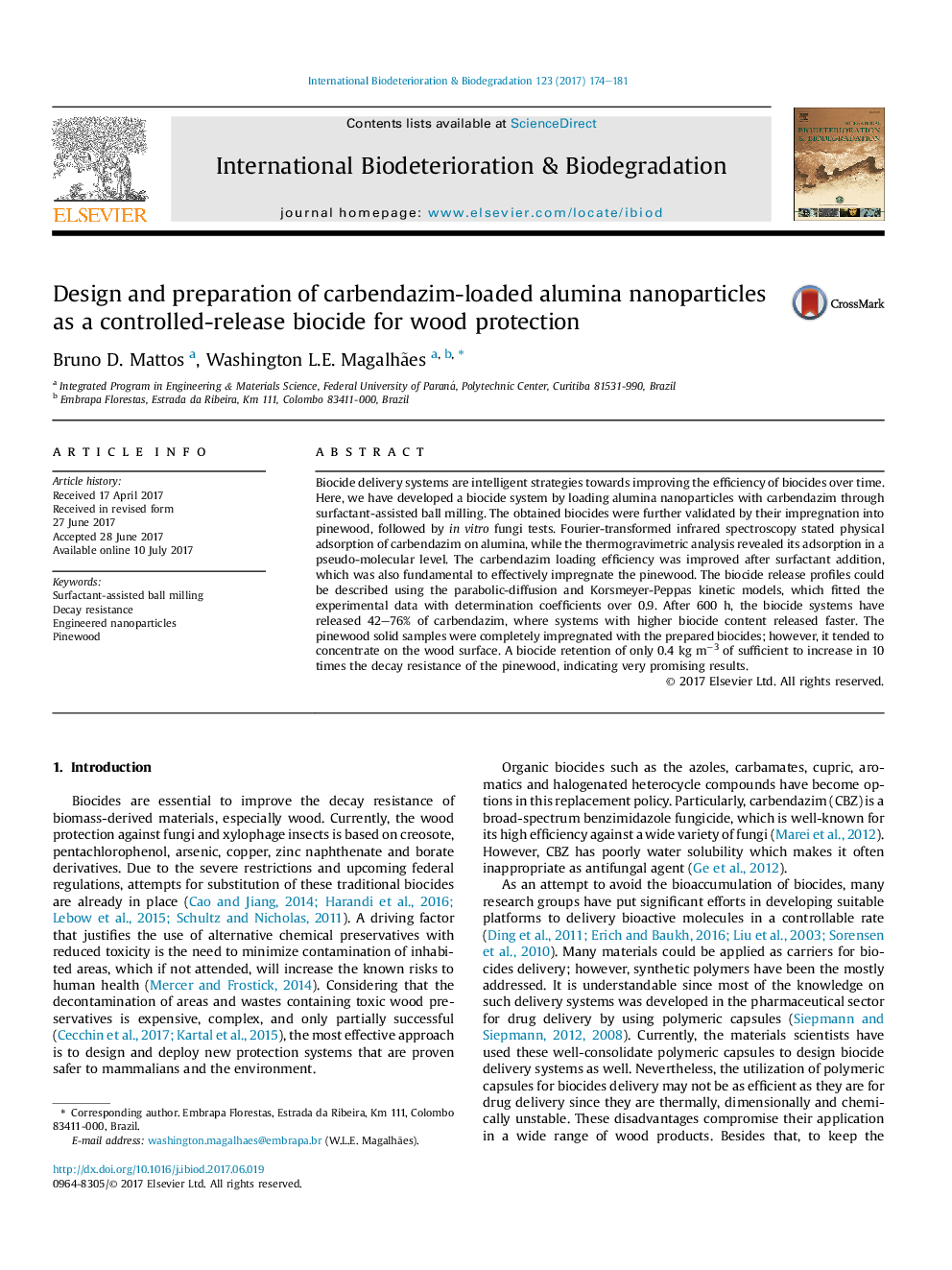| کد مقاله | کد نشریه | سال انتشار | مقاله انگلیسی | نسخه تمام متن |
|---|---|---|---|---|
| 5740265 | 1616294 | 2017 | 8 صفحه PDF | دانلود رایگان |
- Ball-milling was efficient to reduce alumina size and promote biocide loading in it.
- Carbendazim could be slowly release from alumina supports.
- High alumina to biocide ratio helps to decrease the biocide release rate.
- Surfactant was important to impregnate the nanobiocide into pinewood.
- Carbendazim load of 0.4 kg mâ3 was sufficient to protect wood against decay fungi.
Biocide delivery systems are intelligent strategies towards improving the efficiency of biocides over time. Here, we have developed a biocide system by loading alumina nanoparticles with carbendazim through surfactant-assisted ball milling. The obtained biocides were further validated by their impregnation into pinewood, followed by in vitro fungi tests. Fourier-transformed infrared spectroscopy stated physical adsorption of carbendazim on alumina, while the thermogravimetric analysis revealed its adsorption in a pseudo-molecular level. The carbendazim loading efficiency was improved after surfactant addition, which was also fundamental to effectively impregnate the pinewood. The biocide release profiles could be described using the parabolic-diffusion and Korsmeyer-Peppas kinetic models, which fitted the experimental data with determination coefficients over 0.9. After 600 h, the biocide systems have released 42-76% of carbendazim, where systems with higher biocide content released faster. The pinewood solid samples were completely impregnated with the prepared biocides; however, it tended to concentrate on the wood surface. A biocide retention of only 0.4 kg mâ3 of sufficient to increase in 10 times the decay resistance of the pinewood, indicating very promising results.
Journal: International Biodeterioration & Biodegradation - Volume 123, September 2017, Pages 174-181
